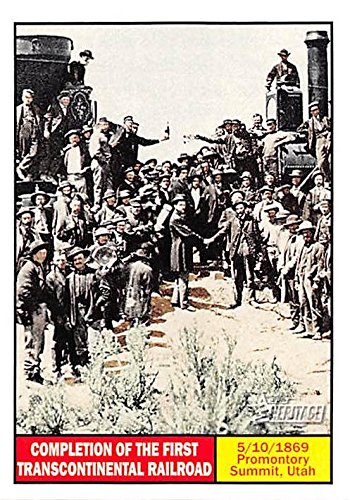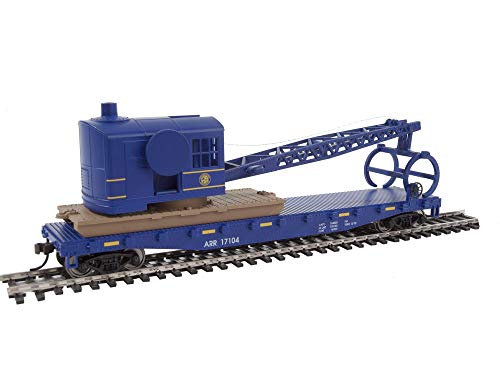You are using an out of date browser. It may not display this or other websites correctly.
You should upgrade or use an alternative browser.
You should upgrade or use an alternative browser.
The Texas Eagle and 110 MPH
- Thread starter user 1215
- Start date

Help Support Amtrak Unlimited Discussion Forum:
This site may earn a commission from merchant affiliate
links, including eBay, Amazon, and others.
- Status
- Not open for further replies.
jis
Permanent Way Inspector
Staff member
Administator
Moderator
AU Supporting Member
Gathering Team Member
If that happens then you just get restricted down to 79mph.looks like something that could be damaged by snow/ice buildup at grade crossings on the SWC route in winter.
On the NEC CTC and ACSES the pickup antennas are on a solid bar that runs across the front of the engine just behind the protective structure in the front of the engine. So presumably that clears out all snow, ice, car, trespasser etc. that might come in the way.
Actually, as I understand it, every locomotive on the corridor has to have the ITCS equipment regardless of the speed at which it will operate (I'm thinking this includes freight trains). For that reason, Amtrak actually required enough engines to be converted to ITCS standard to cover the Lincoln Service and Texas Eagle.Don't forget it may also have something to do with equipment availability. You'd have to have a PTC enabled motor on the Eagle every trip, and given the potential for the motor to not make it out of SAS for one reason or another, you're tying up resources to make sure that you have a PTC motor on the train. I'm sure Illinois paid some decent money to upgrade the small fleet of P-42s to get PTC, someone would have to pay for at least 5 P-42s to get PTC for the Eagle to get it.
As for running the Eagle at faster-than-79, UP would have to approve it. In fact, the UP timetable specifically lists the Amtrak train numbers allowed to operate above 79 mph. Three of the four Lincoln Service round trips are included in the timetable (because those were the trains originally agreed upon). I guess that's to prevent Amtrak from "cheating" and speeding up another train not part of the agreement, even though the equipment for the other Lincoln Service round-trip would be identical.
Swadian Hardcore
Engineer
Man, why can't Amtrak just actively cooperate with Illinois on this? So one part signs a contract and Amtrak itself has no say in it? The TE should run at least 90 and maybe up to 100 mph. 110 mph obviously won't happen anytime soon because of FRA certification.No, it's because of the nature of the agreement with UP regarding the upgrades. Short version is that IIRC, Illinois only contracted with UP for enough 110 MPH slots for "their" trains and not enough for the Eagle as well. It's possible that the Eagle might get up to 90 MPH regardless, but 110 MPH seems unlikely.Yes, Amtrak should allow the train to go at least 90 mph, since the SWC does it all the time. This is just a great example of Amtrak's stagnant, non-flexible rail service!What is it that makes the California cars and Surfliner cars good for 125 where the Superliners are only good for 100? I suspect that the Superliner II's are actually good for 125, but just aren't officially certified for it since they operate interchangeably with Superliner I's, which have lower speed rated trucks.
Anyway, as I understand it, the plan is to keep running the Texas Eagle at 79 mph even after the full upgrades are complete. Seems silly to me not to at least allow it 90 or 100. Even if Amtrak doesn't want to mess with the Eagle's schedule, it'd give it an opportunity to make up time in instances where it's running late.
cirdan
Engineer
- Joined
- Mar 30, 2011
- Messages
- 3,847
Maybe Amtrak just wants to get the Lincoln Serrvice running fast first, and once that has settled down and is running succesfully, turn its attention to the Texas Eagle. After all, why make things unnecessarily complicated by having to deal with additional types of equipment all at the same?As for running the Eagle at faster-than-79, UP would have to approve it. In fact, the UP timetable specifically lists the Amtrak train numbers allowed to operate above 79 mph. Three of the four Lincoln Service round trips are included in the timetable (because those were the trains originally agreed upon). I guess that's to prevent Amtrak from "cheating" and speeding up another train not part of the agreement, even though the equipment for the other Lincoln Service round-trip would be identical.
For a first hand account, I'm on 307 now, just leaving Pontiac. According to my GPS top speed attained between Dwight and Pontiac was 96 mph, and that just briefly. Average speed was just over 90 mph.

$4.00
Completion of the First Transcontinental Railroad trading card (Promontory Summit Utah, 5/10/1869) 2009 Topps Heritage #113
Autograph Warehouse (AW Authentic)

$10.00
Model Railroader Nov 1953 The Evergreen Central, Instuction for Building Railroad
J And J Collectibles

$20.99
$27.98
Walthers Trainline HO Scale Model Flatcar with Logging Crane - Alaska Railroad 17104, Blue
Amazon.com
I could be wrong, but if the equipment is already certified for higher speeds, so long as the proper electronics are installed, it shouldn't have to be route-specific certified, would it? Perhaps a couple days of testing, but I can't imagine it being burdensome. The UP issue - they oughta step back a bit. It was Illinois and Amtrak that helped pay for the upgrades - not for freight to go faster, but to get Amtrak out of their way faster.Maybe Amtrak just wants to get the Lincoln Serrvice running fast first, and once that has settled down and is running succesfully, turn its attention to the Texas Eagle. After all, why make things unnecessarily complicated by having to deal with additional types of equipment all at the same?As for running the Eagle at faster-than-79, UP would have to approve it. In fact, the UP timetable specifically lists the Amtrak train numbers allowed to operate above 79 mph. Three of the four Lincoln Service round trips are included in the timetable (because those were the trains originally agreed upon). I guess that's to prevent Amtrak from "cheating" and speeding up another train not part of the agreement, even though the equipment for the other Lincoln Service round-trip would be identical.
Last edited by a moderator:
jis
Permanent Way Inspector
Staff member
Administator
Moderator
AU Supporting Member
Gathering Team Member
it is interesting that UP has chosen to not create a new class of trains, and instead allows individual trains essentially as an exception. This means UP intends to keep very tight control on how many such trains can be run. I have no idea how the contract reads between UP and State of Illinois. However, the way it is being done suggests that the contract does not give a hige amount of unilateral freedom to State of Illinois and Amtrak to add higher speed trains as they wish.As for running the Eagle at faster-than-79, UP would have to approve it. In fact, the UP timetable specifically lists the Amtrak train numbers allowed to operate above 79 mph. Three of the four Lincoln Service round trips are included in the timetable (because those were the trains originally agreed upon). I guess that's to prevent Amtrak from "cheating" and speeding up another train not part of the agreement, even though the equipment for the other Lincoln Service round-trip would be identical.
cirdan
Engineer
- Joined
- Mar 30, 2011
- Messages
- 3,847
If my memory doesn't fail me, wasn't it said at some point that in the longer run they wanted to add additional Lincoln Service trains. I guess that shorter journey times will mean additional passengers and so additional services would be the logical next step. After all, what is the point of a fast service if it isn't very frequent, and doesn't run at the times you need to travel? To make that possible, I guess Amtrak must already have some preliminary commitment from UP. So if there is an additional high-speed path (or several?), I guess Amtrak maybe doesn't want to "waste" it on the always late Texas Eagle but use it for an additional Lincoln train instead.it is interesting that UP has chosen to not create a new class of trains, and instead allows individual trains essentially as an exception. This means UP intends to keep very tight control on how many such trains can be run. I have no idea how the contract reads between UP and State of Illinois. However, the way it is being done suggests that the contract does not give a hige amount of unilateral freedom to State of Illinois and Amtrak to add higher speed trains as they wish.
Last edited by a moderator:
henryj
Conductor
This really needs to be done. When I rode the Eagle last December this track was awful and it took over an hour to negotiate it. The Eagle could gain more here than all the rest of the route combined.upgrading the East St Louis to Alton segment from 30 to 79 mph and so on.
- Status
- Not open for further replies.


















































